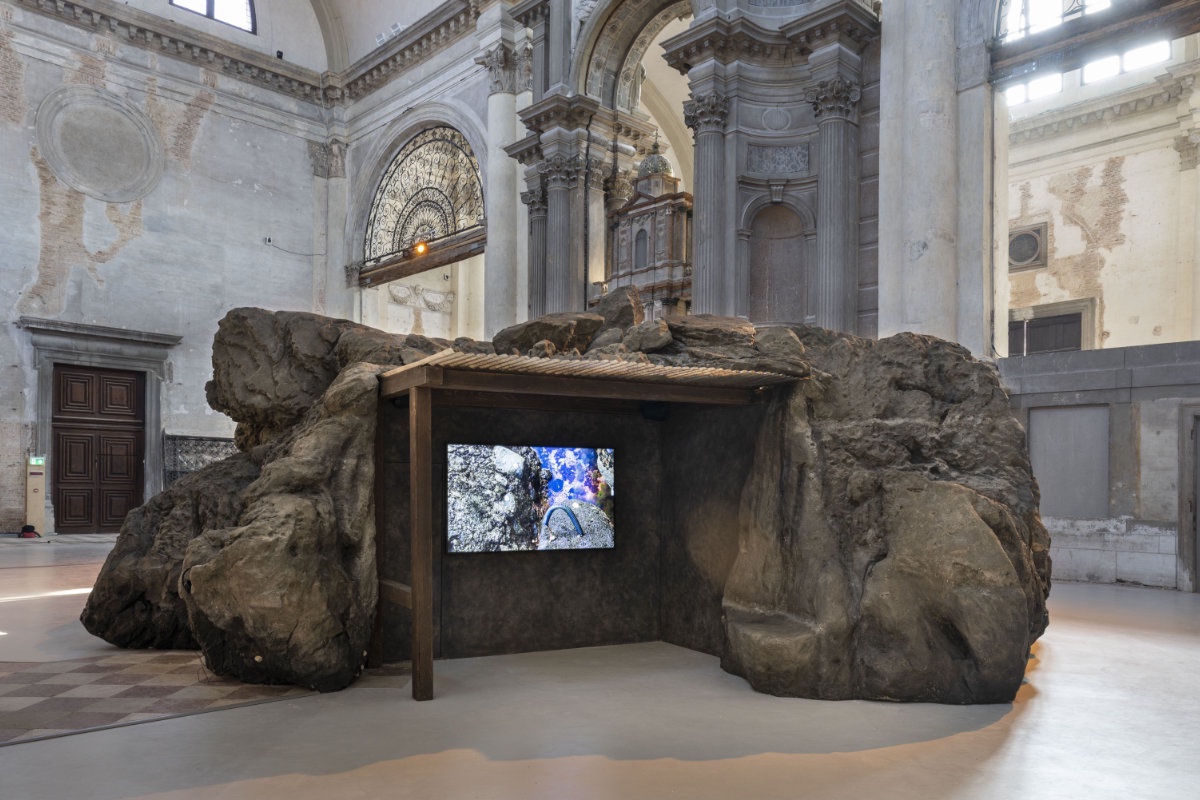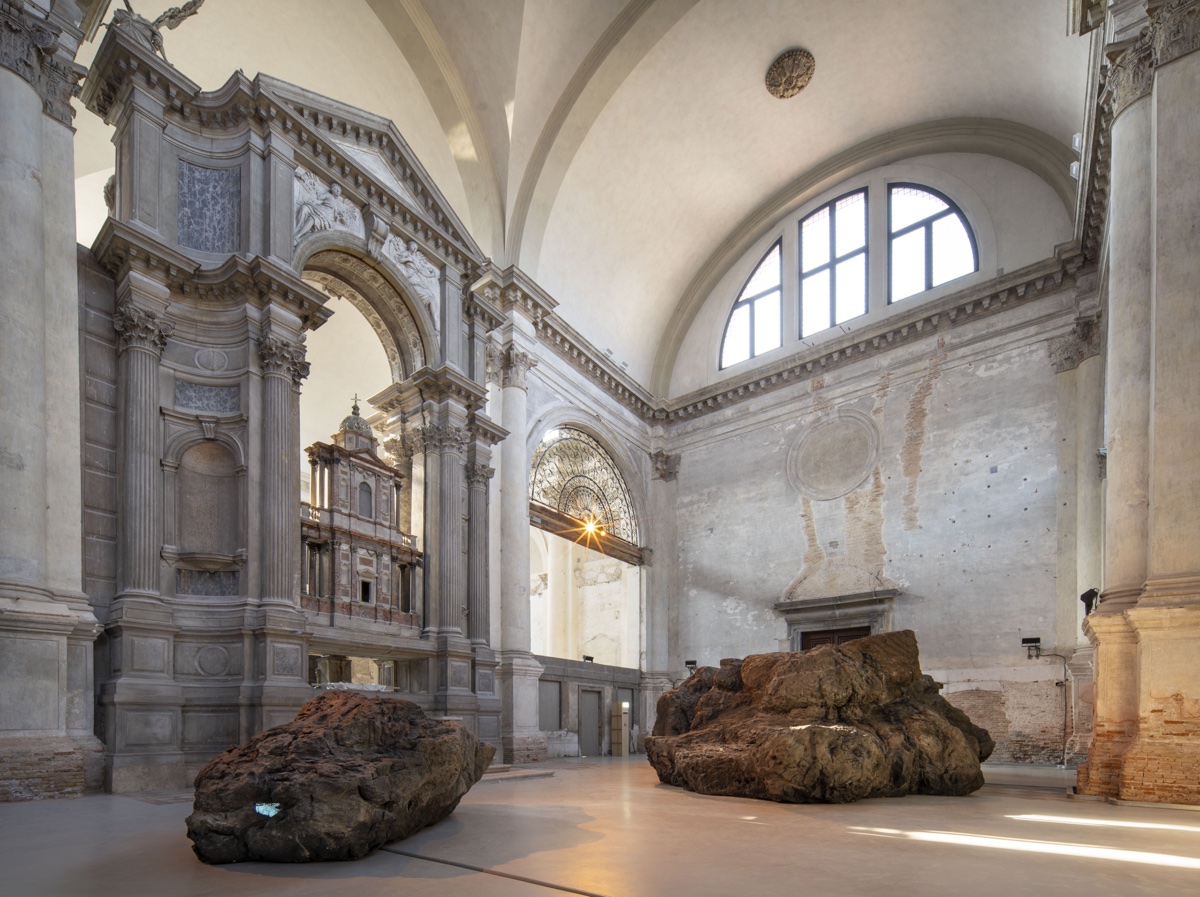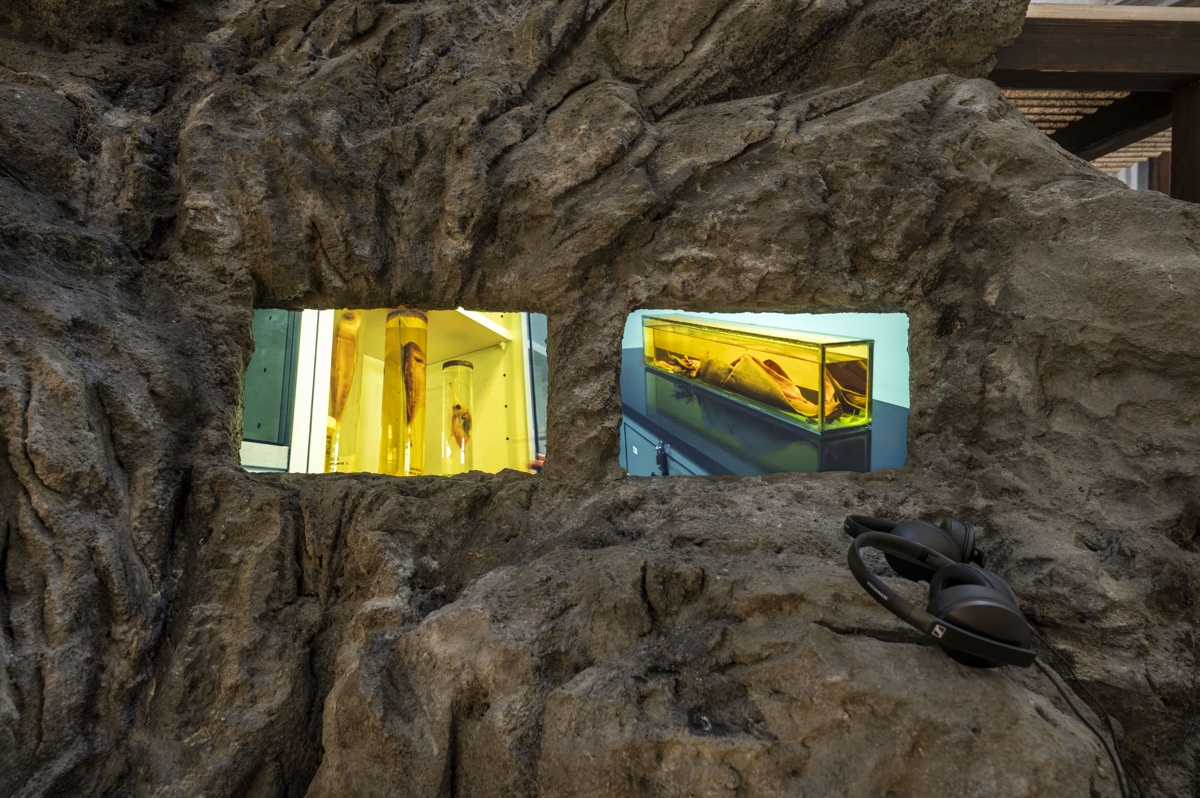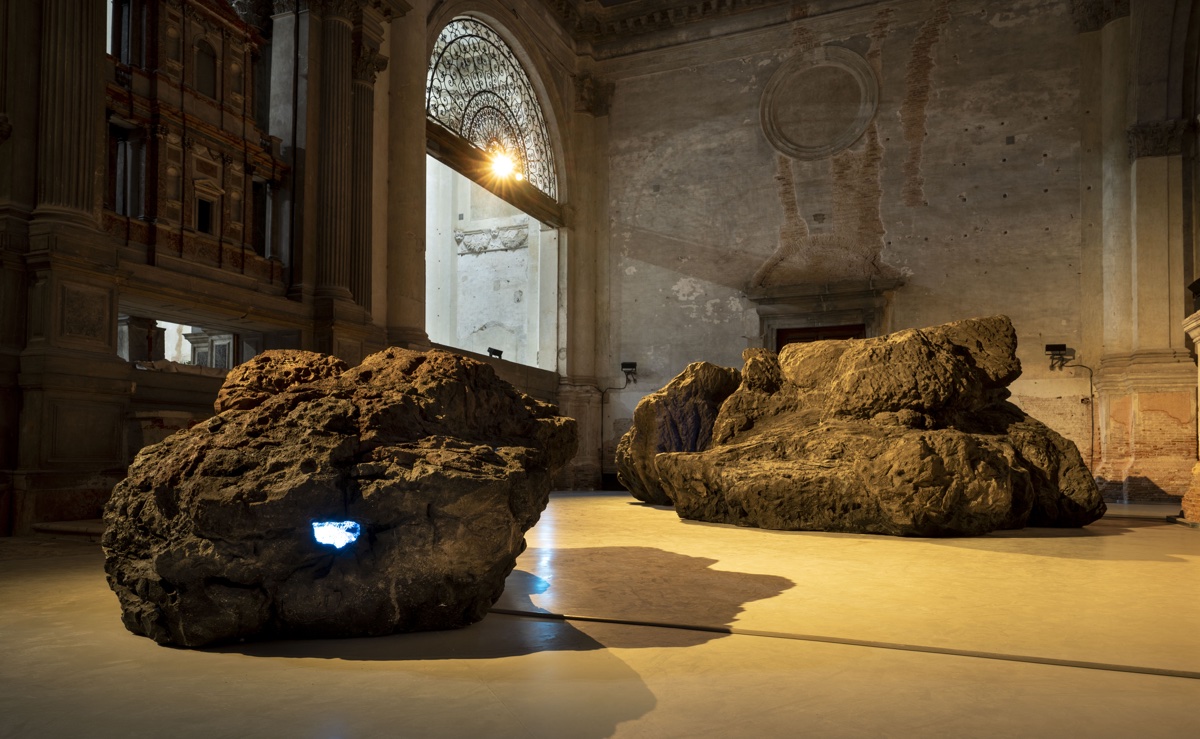
Ciguatera
As part of the cycle of exhibitions at TBA21–Academy’s Ocean Space in Venice, “The Soul Expanding Ocean”, we present newly commissioned works by Dineo Seshee Bopape and Diana Policarpo. The works are independent and yet, they are connected or, more precisely, connectable, by many common threads. Both artists give presence to the Ocean and the stories it holds; Policarpo does so through research that mutates in many ways, and Bopape through a reflection on the power of elements—of water, salt, earth, spirit. These stories, told by rocks, voices, and images that move like the waves, tell of an earth that holds the memory and the substance of the past and the past actions that damaged life in many ways.
Policarpo’s installation starts with an inquiry into the Ilhas Selvagens, a Portuguese administered archipelago in the North Atlantic Ocean. Bopape’s work begins with a journey we took together to the Solomon Islands, and from there she moves on to plantations on the Mississippi, to Jamaica, and then back home to South Africa. Travel, in both works, becomes a language that allows us to imagine a reversal of the wrongdoings of colonialism. Video and technology play a role in both works: Policarpo uses film and audio to enhance a sense of presence while capturing her research process. With their technological lenses, cameras can see layers of life activity that human eyes cannot. Later, embedded in the very substance of the installations, these films become another sculptural material and, as such, they have the same function: to create a dramaturgy where we understand that science is implicated in colonial processes and entangled in power relations. While microorganisms have formed part of myths since ancient times and storytelling has a filmic quality, one could say that in both installations the camera is closer to a mouth that tells than to an eye that records. Where the coexistence of microorganisms and algae ever since the early stages of evolution are at the core of Policarpo’s lens, for Bopape it is rocks, and her work teaches us to understand how ancient, mythical times are not of the past, since the times of oppression and colonialism are still not past, since destruction and exploitation of resources are still not past. The unseen—as in the spirits and energies moving and connecting us with the environment around us— is central in Bopape’s video and augmented reality works activating a multifarious presence. There, we need to add another element: the voice. A voice that sings a song that appeared in a dream during the trip to the Solomon Islands. Born from a dream and in fear of water, it is a song that may teach us how to sing in Ocean tongues.
Both installations turn into storytellers, guiding an experience that asks us to break off the taxonomic separation that disjoins nature and culture, culture and myth, science and belief. To refuse this modern rationale demands a remedy, a different trust in the elements that compose our reality and refuses a single narrative. It is important to bear in mind that the scientific data collected and the spiritual encounters embedded in these works are simultaneously oriented toward poetically grasping the Ocean as a presence of nature while enhancing a view of science and technology that is inseparable from emotional experiences and vernacular beliefs.
Both commissions, with the artistic journeys and the research that nourished them, give a sounding background to the question of how we understand the Ocean: How do we formally connect to an entity without form, and why is art so important, so fundamental to the issues of the Ocean and the climate emergency? One answer is that if we are not able to experience all dimensions that potentially connect us with—instead of distinguishing us from—the Ocean, we will not know how to act. And acting is what we aim for. An action that must not be restricted to avoiding further damage, an action meant to create conditions to experience ourselves and every being as part of life, a life we respect and listen to.
The process of working hand in hand with the artists, engaging in tight, intense conversations about their research, the materials, the narratives, the languages used, is a definitive trait of exhibiting at Ocean Space. We are aware of the fact that materials and travel carry an environmental impact and want to be transparent about how the production of work is still not as sustainable as we all wish it would be. We would like to suggest that our coming together, with the Ocean and nature, compensates—at least partially—for the damage of the carbon footprint attached to it, because the works generated out of these experiences open up perspectives otherwise not available. These works are brought together in order to provide a powerful expression of a new life. Joy, kinship, and trust in life’s diversity, in the many non-linguistic, and yet fertile ways of transmission are the center of a new pedagogy through art. A pedagogy that strives for equality and future forms of organizing survival that respects all that is alive.
Chus Martínez




